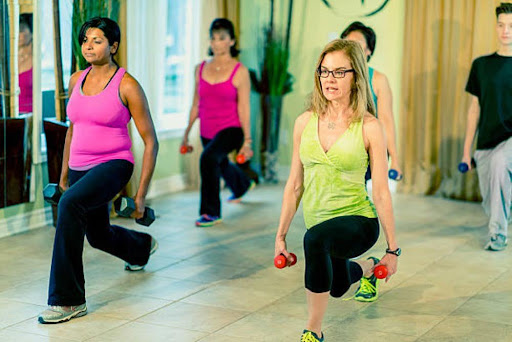Fitness body bootcamps have gained popularity as an effective and dynamic way to achieve fitness goals in a group setting. These bootcamps typically incorporate a variety of exercises, training methods, and workout formats to provide participants with a comprehensive and challenging fitness experience.
In this article, we will explore the types of exercises, training methods, and workout formats commonly used in fitness body bootcamps, including circuit training, HIIT (High-Intensity Interval Training), strength training, cardio drills, and functional movements.
1. Circuit Training
Circuit training is a staple in fitness body bootcamps due to its versatility and efficiency. In circuit training, participants move through a series of exercises, known as stations, with minimal rest in between. Each station targets different muscle groups or fitness components, such as strength, cardiovascular endurance, and core stability. Common circuit training exercises include:
- Bodyweight exercises (e.g., push-ups, squats, lunges)
- Resistance band exercises
- Dumbbell or kettlebell exercises
- Plyometric exercises (e.g., box jumps, burpees)
- Core exercises (e.g., planks, Russian twists)
The circuit format allows participants to work at their own pace while providing a full-body workout in a time-efficient manner.
2. HIIT (High-Intensity Interval Training)
HIIT is another key component of a fitness body bootcamp, known for its ability to torch calories, boost metabolism, and improve cardiovascular fitness in a short amount of time. HIIT involves alternating between short bursts of high-intensity exercise and brief periods of rest or lower-intensity recovery. Common HIIT exercises include:
- Sprinting or running intervals
- Jumping jacks
- Mountain climbers
- High knees
- Jump squats
- Burpees
HIIT workouts are typically intense and challenging, making them ideal for participants looking to maximize calorie burn and improve overall fitness levels.
3. Strength Training
Strength training is essential for building muscle, improving muscular endurance, and enhancing overall strength and power. In fitness body bootcamps, strength training exercises are often incorporated using a variety of equipment, including dumbbells, barbells, kettlebells, and resistance bands. Common strength training exercises include:
- Squats (front squats, goblet squats, sumo squats)
- Deadlifts (conventional deadlifts, Romanian deadlifts)
- Lunges (forward lunges, reverse lunges, walking lunges)
- Chest presses (bench press, dumbbell chest press)
- Rows (bent-over rows, seated rows)
- Shoulder presses (overhead press, dumbbell shoulder press)
Strength training exercises help participants build lean muscle mass, improve metabolism, and increase functional strength for everyday activities.
4. Cardio Drills
Cardiovascular conditioning is a key focus in fitness body bootcamps, with cardio drills designed to elevate heart rate, improve endurance, and burn calories. Cardio drills often involve high-impact, dynamic movements that engage multiple muscle groups simultaneously. Common cardio drills include:
- Jumping rope
- High knees
- Butt kicks
- Jumping jacks
- Agility ladder drills
- Shuttle runs
Cardio drills can be performed in intervals or incorporated into circuit-style workouts to keep participants engaged and challenged.
5. Functional Movements
Functional movements mimic everyday activities and focus on improving mobility, stability, and overall movement quality. In fitness body bootcamps, functional movements are integrated to enhance functional fitness and performance in real-life situations. Common functional movements include:
- Squat variations (air squats, goblet squats, pistol squats)
- Lunge variations (forward lunges, lateral lunges, reverse lunges)
- Hip hinge movements (deadlifts, kettlebell swings)
- Pushing movements (push-ups, bench press)
- Pulling movements (pull-ups, rows)
- Core stabilization exercises (planks, bridges, Russian twists)
Functional movements help participants develop strength, balance, and coordination, leading to improved performance in daily activities and reduced risk of injury.
Conclusion
Fitness body bootcamps offer a diverse and challenging array of workouts and training methods to help participants achieve their fitness goals. By incorporating circuit training, HIIT, strength training, cardio drills, and functional movements, these bootcamps provide a comprehensive and effective approach to fitness that keeps participants engaged, motivated, and seeing results. Whether you’re looking to build strength, improve cardiovascular fitness, or enhance overall functional performance, fitness body bootcamps offer something for everyone.
